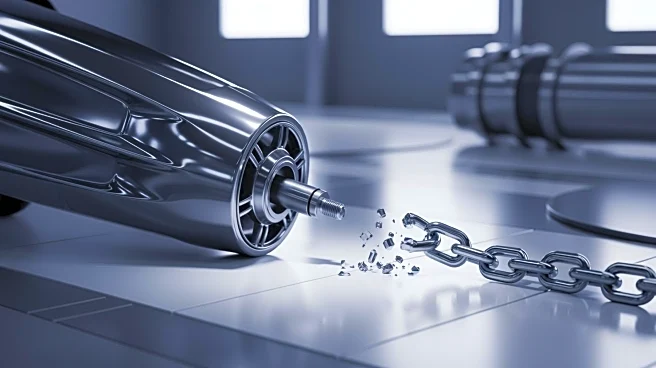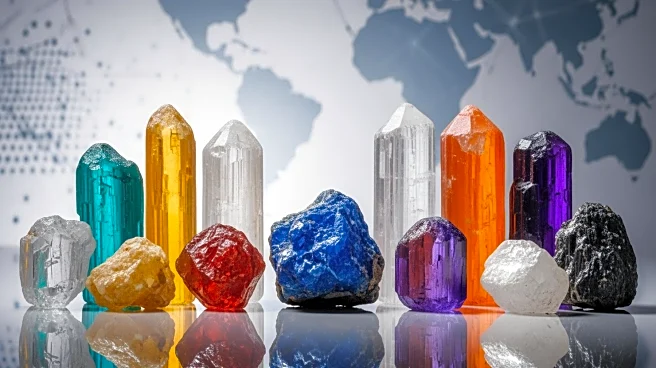What's Happening?
Critica, listed on the Australian Securities Exchange as CRI, has successfully achieved a 63% recovery rate of gallium oxide using leach solutions derived from metallurgical testwork and geochemical analysis
at its Jupiter Project in Western Australia. The project boasts a resource of 1.8 billion tonnes with a total rare earth oxide concentration of 1,700 parts per million (ppm) at a 1,000ppm cut-off, averaging 39ppm gallium oxide and containing 70,000 tonnes of gallium. CEO Jacob Deysel emphasized that this achievement marks a significant step in demonstrating the potential for coproduct recovery within their existing processing framework, without altering the project's scope or strategy. Critica is focused on advancing the Jupiter Project to produce elements essential for sectors such as artificial intelligence, electric vehicles, renewables, and defense.
Why It's Important?
The successful recovery of gallium oxide at the Jupiter Project is crucial for Critica as it enhances the project's viability and potential profitability. Gallium is a critical mineral used in various high-tech applications, including semiconductors and electronics, which are vital for the U.S. technology and defense industries. By securing a reliable source of gallium, Critica contributes to the strategic imperative of ensuring custody of supply for critical minerals, which is increasingly important given global supply chain challenges. This development could bolster the U.S. and allied countries' efforts to reduce dependency on foreign sources for essential materials, thereby enhancing national security and economic stability.
What's Next?
Critica plans to refine its processes to define product pathways, focusing on additional byproducts such as germanium, scandium, and iron. This strategic move aims to further enhance the value and output of the Jupiter Project. As the company transitions from an explorer to a developer, it will continue to advance its mine-to-magnet plan, which is designed to produce elements needed for emerging technologies and industries. The ongoing development of the Jupiter Project is expected to attract interest from stakeholders in the technology, renewable energy, and defense sectors, potentially leading to partnerships or investments that could accelerate the project's progress.
Beyond the Headlines
The recovery of gallium oxide at the Jupiter Project highlights the broader implications of securing critical mineral supplies. As global demand for high-tech applications grows, the ability to produce and supply these materials domestically becomes increasingly important. This development underscores the need for strategic investments in mining and processing technologies that can support sustainable and secure supply chains. Additionally, it raises ethical considerations regarding environmental impact and the responsible sourcing of minerals, which are essential for maintaining public trust and regulatory compliance.











